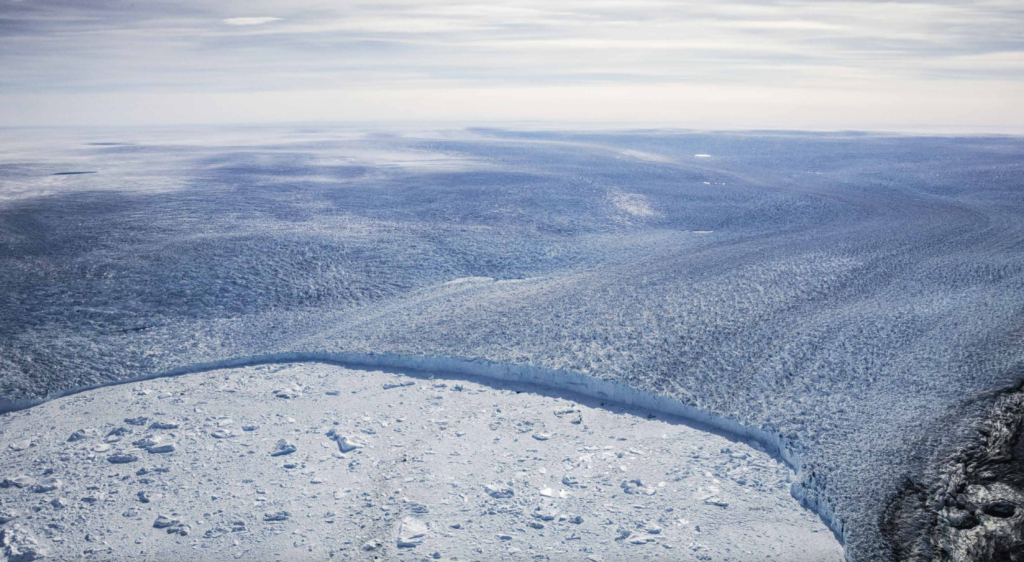
WHAT IS A GLACIER?
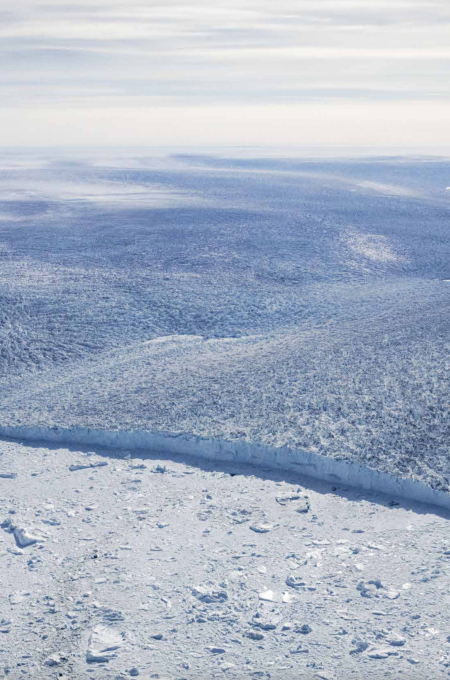
- One of the world’s most productive glaciers
- The glacier bears witness to climate change
- Glacial crevasses and meltwater lakes
- In the past Greenland was warm and green
You solve the tasks by using
- Text
- Audio
- Drawing tools
- Pictures
In the book you can find pictures about the subject.
The Sermeq Kujalleq glacier produces the world’s fastest ice flow. It moves at a speed of up to 40 metres a day.
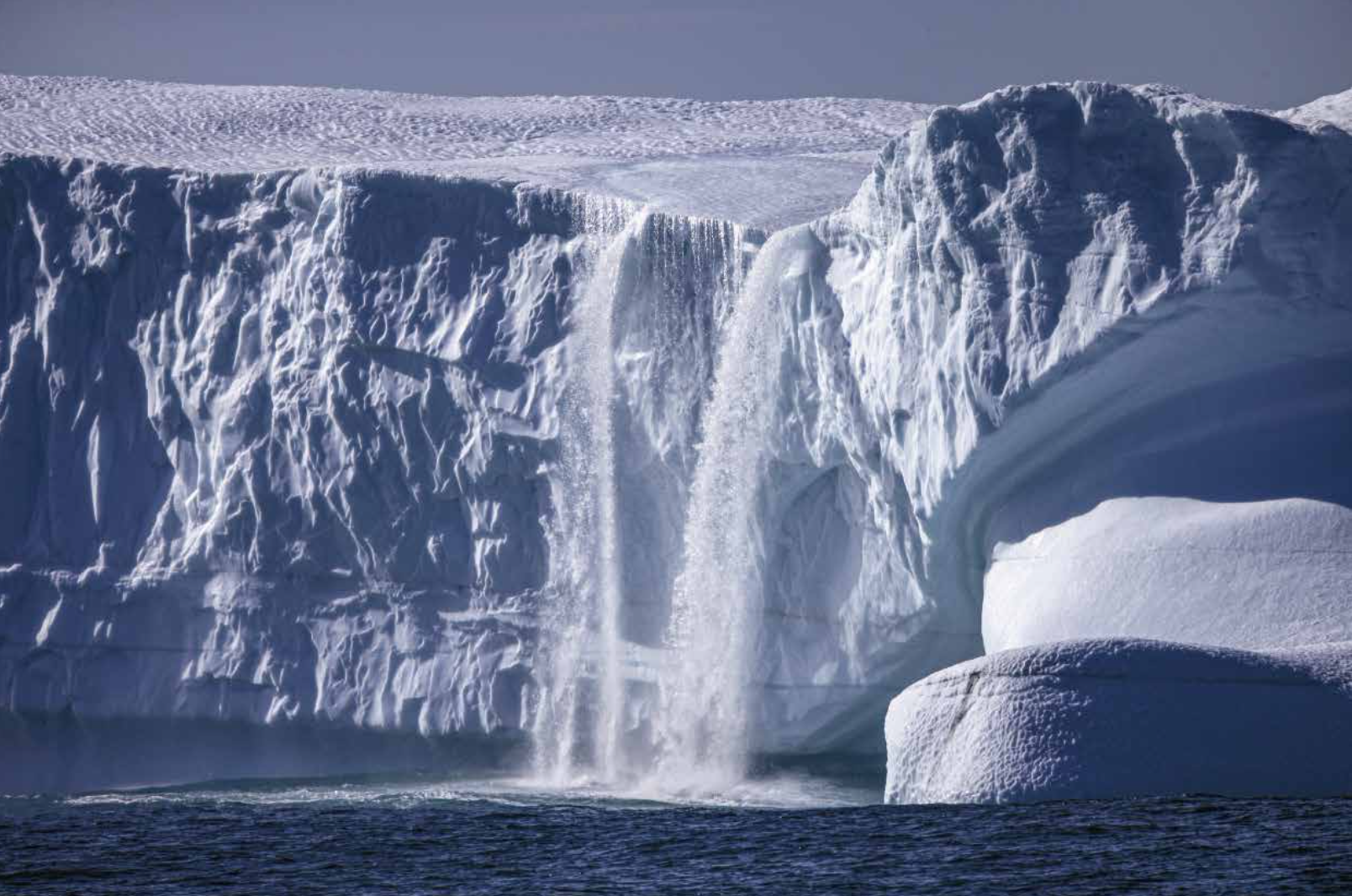
In summer it happens a few times that large parts of the glacier foot break off. This is called calving. See how on the next slide.
What is a glacier? Look at the picture on pages 8-9 in the book.
What happens when the glacier calves?
How many steps do you take to walk 40 metres?
The map shows the moving of the glacier front from 1850 to 2018.
In 6000 BC the front was at the mouth of the Icefjord. 7,875 years later it was in the middle.
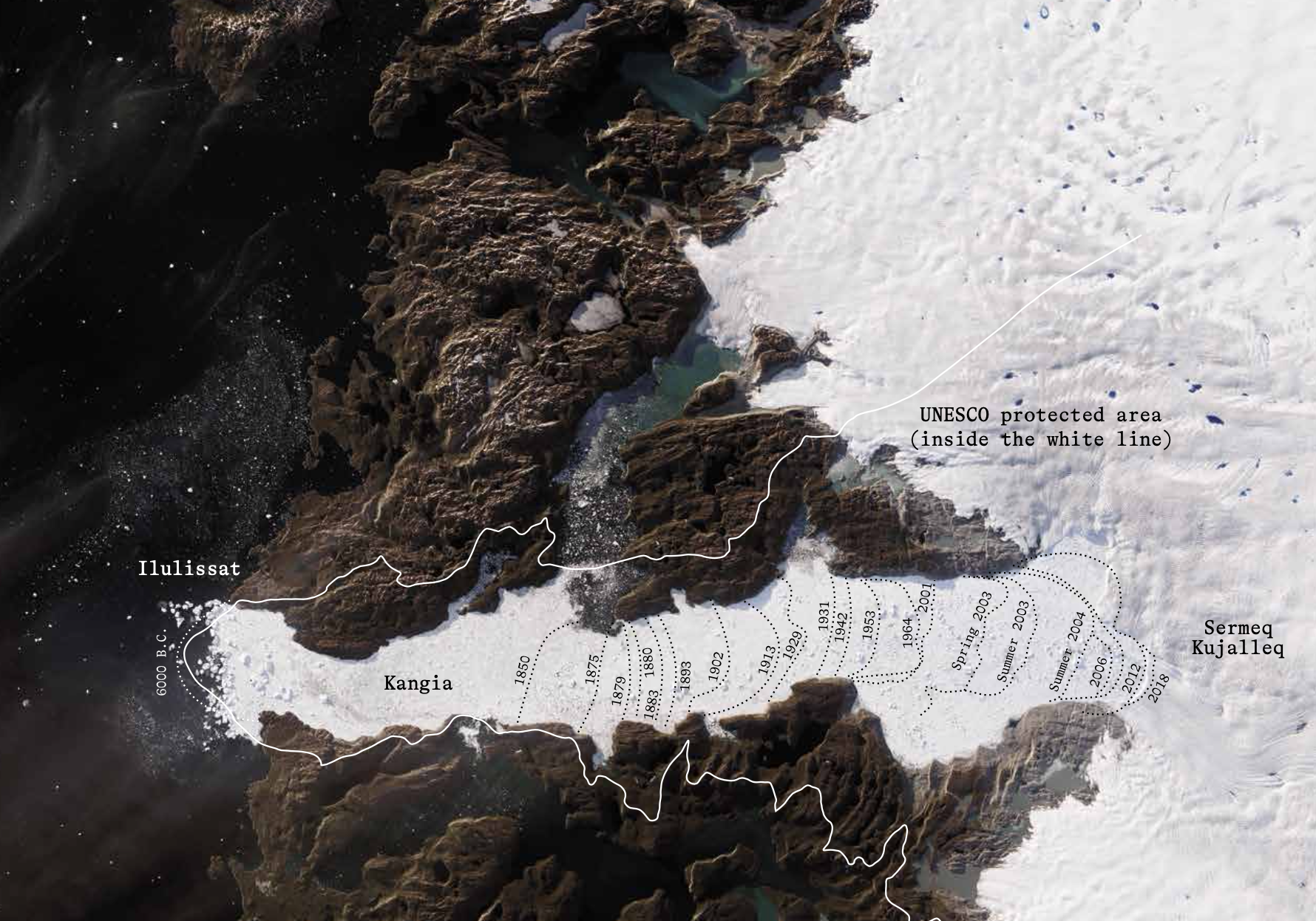
In what period has the front retracted most?
The sun warms the surface of the ice sheet and creates
clear turquoise rivers on its top. Some of the water ends in glacial crevasses, where it is transported down through the ice to the bottom. There the water masses function as ‘grease’, causing the ice to flow more quickly towards the foot.

Some of the water collects on the ice in lakes.
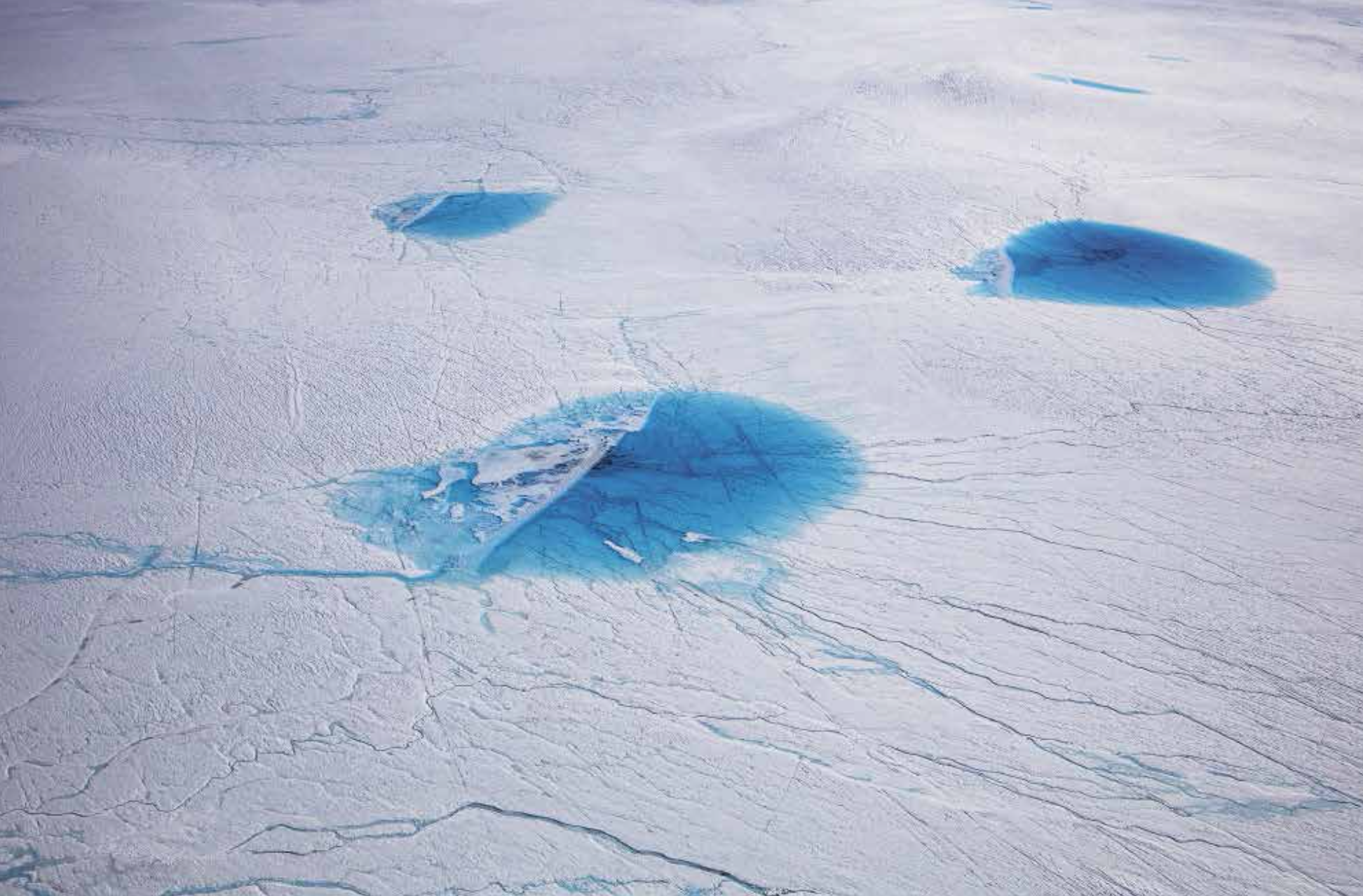
What is the colour of the meltwater lakes?
What makes the ice melt?
What is the difference between a river and a lake?
Read the text or have it read aloud.
Does something make you wonder?
Today, the Greenlandic ice sheet covers 80% of the country and contains 2.99 million cubic kilometres of ice. The ice currently makes up almost half of all the freshwater in the northern hemisphere, and has built up through layer upon layer of snowfall, which over time has been compacted into ice.
But around 450,000 years ago the landmass was warmer, and traces have been found in southern Greenland of forests containing pine, fir, yew and alder trees. There are also genetic traces of butterflies, moths, flies and beetles. These have been found through DNA analyses taken from ice cores drilled out of the ice sheet.
The Sermeq Kujalleq glacier produces the world’s fastest ice flow. It moves at a speed of up to 40 metres a day.

In summer it happens a few times that large parts of the glacier foot break off. This is called calving. See how on the next slide.
What is a glacier? Look at the picture on pages 8-9 in the book.
What happens when the glacier calves?
How many steps do you take to walk 40 metres?
The map shows the moving of the glacier front from 1850 to 2018.
In 6000 BC the front was at the mouth of the Icefjord. 7,875 years later it was in the middle.

In what period has the front retracted most?
The sun warms the surface of the ice sheet and creates
clear turquoise rivers on its top. Some of the water ends in glacial crevasses, where it is transported down through the ice to the bottom. There the water masses function as ‘grease’, causing the ice to flow more quickly towards the foot.

Some of the water collects on the ice in lakes.

What is the colour of the meltwater lakes?
What makes the ice melt?
What is the difference between a river and a lake?
Read the text or have it read aloud.
Does something make you wonder?
Today, the Greenlandic ice sheet covers 80% of the country and contains 2.99 million cubic kilometres of ice. The ice currently makes up almost half of all the freshwater in the northern hemisphere, and has built up through layer upon layer of snowfall, which over time has been compacted into ice.
But around 450,000 years ago the landmass was warmer, and traces have been found in southern Greenland of forests containing pine, fir, yew and alder trees. There are also genetic traces of butterflies, moths, flies and beetles. These have been found through DNA analyses taken from ice cores drilled out of the ice sheet.



